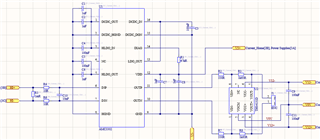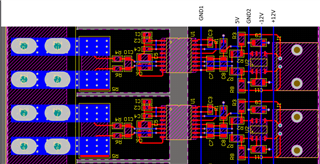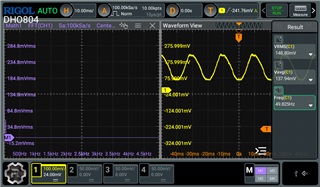Other Parts Discussed in Thread: THS4131
Tool/software:
Dear sir,
This is our initial version of the AMC3302 current measurement board. It produces constant 300 ~ 350mV noise signal in the BNC output of THS4131D amplifier. Our expected maximum current measurement is 50A and the shunt resistor value is 1mOhm.
Schematic

PCB Layout

Initially I missed the filter in the above circuit. Based on the previous post suggestions, added the filter low pass filter in the final output (after THS4131D). (R = 1000 Ohm & C = 100nF, cut off frequency: 1.6 kHz).
Please find the below current waveforms for the AC and DC Current loads.
DC Load current: 1A

AC Load current: 200mA

Queries
1. The load current having constant noise of 200mA (in the voltage output measurement:40mV (after the 2nd Amplifier output))). THS4131 amp gain is 5. AMC3302 output 8mV noise output. Could you please suggest the solution to reduce the noise output in the current measurement. (In the revised version, I will move the low pass filter in the output of the AMC3302 (before THS4131 amp).
2. We are getting the constant noise in the range of 2.8kHz to 3.5kHz range. This noise is always present the measurement output.
3. During the normal operation, the device AMC3302 required power input is 231mW (231mW / 5.5V = 42mA) (section 6.5). The maximum safety input current limit 309 mA (5.5V). I wish to add the fuse in the power supply lines to protect the isolation barrier. During the normal operation, shall we add the fuse in power supply input current limit as 100mA? kindly suggest the suitable fuse rating for the power supply input lines.
4. Do we need to use the fuse after shunt resistor and before INP (pin 6) and INN (pin 7).? The amplifier output is connected to DAQ Module and PC. During the fault condition we need to prevent the damage to the isolation barrier. Do we need to add the fuse in INP & INN pins? if yes kindly suggest the suitable rating for the same.
5. During the fault condition, if the isolation barrier gets damaged, does it affect only the communication or it become open circuit or short circuit or possibilities for both?
Thanks & Regards,
Ilamparithi Tamizhanangu.



